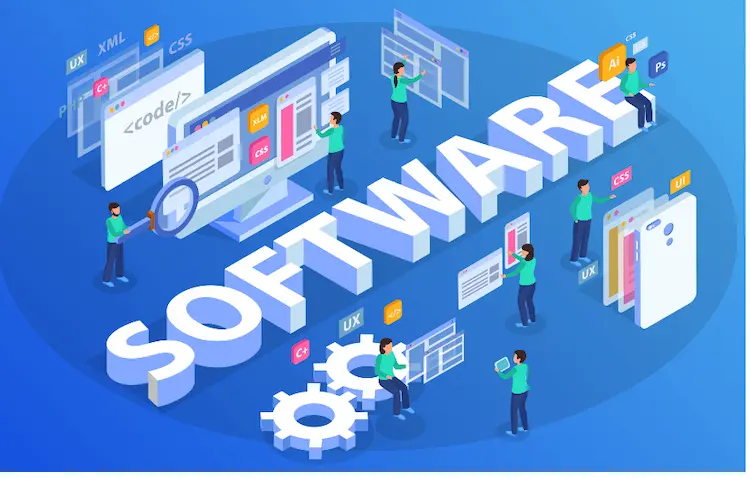Innovation is crucial for businesses because it enables competitive advantage, operational efficiency, adaptability to market changes, and growth. It also improves customer relationships, attracts top talent, and supports sustainability efforts.
Streamlining innovation processes with digital tools is crucial for enhancing and accelerating the development of new products, services, or processes. In this article, you will learn some ways in which digital tools can be integrated to facilitate innovation.
Innovation Management Software
Innovation management refers to the systematic process through which organizations manage the development of new ideas and inventions into viable products, services, or processes. It involves coordinating and guiding the creative capabilities and resources of the company to exploit new opportunities and achieve competitive advantage.
Innovation management software helps manage the end-to-end innovation process, from idea generation to execution. These tools support strategic alignment, and portfolio management, and provide analytics to measure the impact of innovation initiatives.

Collaboration Platforms
Collaboration is crucial in innovation because it combines diverse perspectives, expertise, and resources, leading to more comprehensive and creative solutions. When individuals from different backgrounds and disciplines work together, they can challenge each other’s assumptions, enhance problem-solving capabilities, and foster a broad range of ideas.
Collaboration tools enable teams to communicate and collaborate in real time, regardless of their physical location. These platforms help maintain a flow of ideas and feedback that is crucial for innovative processes.
Project Management Software
Project management complements these efforts by providing a structured approach to executing innovative projects, ensuring they align with business objectives and are delivered efficiently. It helps manage risks and resources effectively, making sure that innovative initiatives add tangible value and meet predefined metrics of success.
Digital project management tools help organize tasks, deadlines, and resources. They provide an overview of project status and can streamline workflows by automating repetitive tasks.
Idea Management Systems
Idea management refers to the systematic process of generating, capturing, organizing, and evaluating insights or suggestions that can lead to improvements and innovations within an organization. This process is designed to harness the collective intelligence and creativity of all participants, often involving employees, stakeholders, or the general public.
These platforms facilitate the collection, development, and evaluation of ideas within an organization. They help democratize the innovation process by allowing employees at all levels to contribute ideas, which can be vetted and developed through a structured process.
Prototyping Tools
Digital prototyping is a process used in product development that creates and tests a digital model of a product before it is physically built. This approach allows designers and engineers to visualize, simulate, and analyze the product in a computer-generated environment, which can lead to better decision-making and more innovative solutions.
Digital prototyping tools allow designers to create and iterate on product designs quickly and effectively. These tools make it easier to visualize new concepts and make adjustments based on user feedback without the need for costly physical prototypes.
Data Analytics and AI

Data Analytics involves processing raw data to draw meaningful insights for decision-making, classified into descriptive, diagnostic, predictive, and prescriptive types. It’s applied in various industries to improve performance and predict trends. Artificial intelligence (AI) simulates human intelligence in machines, allowing them to learn, solve problems, and make decisions.
Key areas in AI include Machine Learning, Natural Language Processing, and Robotics, which enable tasks ranging from spam filtering to autonomous driving. Both fields are central to enhancing operational efficiencies, making informed decisions, and driving innovation across multiple sectors.
Leveraging big data analytics and artificial intelligence can provide insights that drive innovation. Tools like Google Analytics, IBM Watson, and custom AI models can analyze trends, predict market demands, and optimize processes, contributing to more informed decision-making.
Cloud Computing Services

Cloud computing services provide scalable and cost-effective computing resources via the internet, allowing organizations to bypass the heavy capital investments typically associated with traditional IT infrastructure. These services enhance flexibility, enabling businesses to adjust resources based on demand and pay only for what they use.
Accessibility from any location facilitates collaboration, while robust disaster recovery and data backup capabilities ensure data integrity. Security is prioritized with advanced measures implemented by providers. Cloud computing supports rapid innovation by allowing quick deployment and testing of new applications, promoting efficient experimentation.
The main service models include Infrastructure as a Service (IaaS), Platform as a Service (PaaS), and Software as a Service (SaaS). Each offers varying levels of control and management, making cloud services adaptable to diverse business needs, from running virtual servers (IaaS) to using internet-based applications (SaaS), thereby democratizing access to advanced technology and fostering operational resilience and strategic flexibility.
Digital Twins
Digital twins create virtual replicas of physical systems to simulate and optimize their performance. These models integrate real-time data from IoT sensors, enabling detailed simulations and visualizations. Industries like manufacturing, automotive, and urban planning use digital twins to improve efficiency, safety, and sustainability.
In manufacturing, they optimize production lines and predict equipment failures. Automotive industries use them to enhance vehicle design and performance, while urban planners model cities to manage traffic and infrastructure. The feedback loop between the virtual and physical realms allows for continuous improvement.
Future advancements in AI and machine learning will enhance the predictive capabilities of digital twins, and as 5G technology evolves, real-time data processing will further empower these tools. Digital twins are crucial for modern industries, offering significant benefits in operational efficiency and strategic planning across various sectors.

Choosing the Right Digital Tools for Your Business
Selecting the best digital tools for your business involves a thorough approach that begins with identifying specific needs such as improving customer relations, project management, or accounting processes. Set a clear budget for both initial and ongoing expenses.
Research various options, comparing their features, user reviews, and integration capabilities with your existing systems. Ensure the tools are scalable and can adapt as your business grows. Pay attention to security and compliance, particularly for data protection. Utilize free trials to evaluate tool usability in your actual business setting. Gather feedback from end-users and provide necessary training to optimize tool usage.
Continuously monitor the performance of these tools and remain flexible to switch or upgrade as better solutions become available or as business needs evolve. This structured approach helps ensure that the selected digital tools effectively enhance productivity and support your business objectives.
Conclusion
Integrating digital tools into organizational processes can significantly enhance innovation efficiency and streamline workflows. By adopting and integrating digital tools, organizations can enhance their ability to innovate effectively. This leads to faster development cycles, improved products and services, and a stronger position in the competitive marketplace.